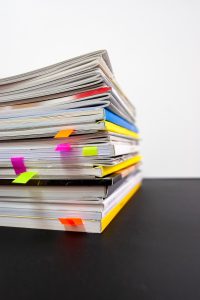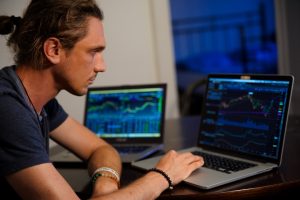Forex, or foreign exchange, is the largest financial market in the world, with an average daily trading volume of over $5 trillion. It is a decentralized global network of banks, financial institutions, and individual traders who exchange currencies and speculate on their value changes. Forex trading can offer high returns, but it also involves significant risks. Therefore, it is essential to have a solid understanding of the market, its dynamics, and the strategies to grow your investment. In this article, we will explain how to grow 500 in Forex.
1. Understand the Forex market
Before starting trading, it is essential to understand the Forex market’s basics. Forex trading involves buying and selling currencies in pairs, such as EUR/USD, USD/JPY, GBP/USD, etc. The exchange rate of a currency pair indicates the value of the base currency (the first currency in the pair) in terms of the quote currency (the second currency in the pair). For example, if the EUR/USD exchange rate is 1.1200, it means that one euro is worth 1.1200 US dollars.
The Forex market operates 24 hours a day, five days a week, and is open to traders all over the world. It is influenced by various factors, such as economic data releases, central bank decisions, geopolitical events, and market sentiment. Therefore, it is crucial to stay informed about the latest news and trends that could affect currency prices.
2. Develop a trading plan
To grow your investment in Forex, you need to have a well-defined trading plan. A trading plan should include your goals, risk tolerance, trading style, and strategies. Your goals could be short-term or long-term, such as making a certain percentage of profits per month or per year. Your risk tolerance should reflect how much you are willing to lose in a single trade or a series of trades.
Your trading style could be based on technical analysis, fundamental analysis, or a combination of both. Technical analysis involves using charts and indicators to identify trends, patterns, and potential entry and exit points. Fundamental analysis involves analyzing economic data, news, and events that could affect currency prices. A combination of both approaches could provide a more comprehensive trading plan.
Your strategies should include your entry and exit rules, position sizing, and risk management techniques. Entry rules could be based on technical indicators, such as moving averages, or fundamental factors, such as interest rates. Exit rules could be based on profit targets, stop-loss orders, or trailing stops. Position sizing should reflect your risk tolerance and the size of your trading account. Risk management techniques should include diversification, stop-loss orders, and avoiding overtrading.
3. Practice with a demo account
Before risking real money in the Forex market, it is advisable to practice with a demo account. A demo account simulates the real market conditions, but with virtual money. It allows you to test your trading plan, strategies, and skills without risking any capital. You can use a demo account to familiarize yourself with the trading platform, execute trades, and analyze the market. It is essential to treat the demo account as seriously as a real account and not to take excessive risks or emotions.
4. Start with a small account
Once you have practiced with a demo account and feel confident with your trading plan, you can start trading with a small account. It is essential to start with a small account size and gradually increase it as you gain experience and profits. A small account size allows you to manage your risk better and avoid significant losses. You should also consider the trading costs, such as spreads, commissions, and overnight fees, and how they affect your profitability.
5. Manage your risk
Risk management is crucial in Forex trading. It involves minimizing your losses and maximizing your profits. You should always use stop-loss orders to limit your potential losses in case the market moves against you. You should also avoid overtrading or taking excessive risks that could wipe out your account. Diversification is another risk management technique that involves spreading your investments across different currencies, timeframes, and strategies.
6. Learn from your mistakes
Forex trading involves making mistakes and learning from them. It is essential to keep a trading journal to record your trades, strategies, and outcomes. You should analyze your trading journal regularly and identify your strengths and weaknesses. You should also seek feedback from other traders or mentors and learn from their experiences. Continuous learning and improvement are essential to grow your investment in Forex.
Conclusion
Growing 500 in Forex requires a solid understanding of the market, a well-defined trading plan, and effective risk management techniques. It also involves practice, patience, and continuous learning. By following the steps outlined in this article, you can increase your chances of success in Forex trading. However, it is essential to remember that Forex trading involves significant risks, and you should never invest more than you can afford to lose.





